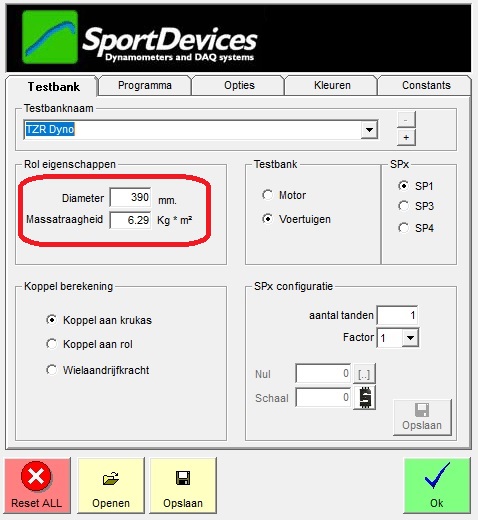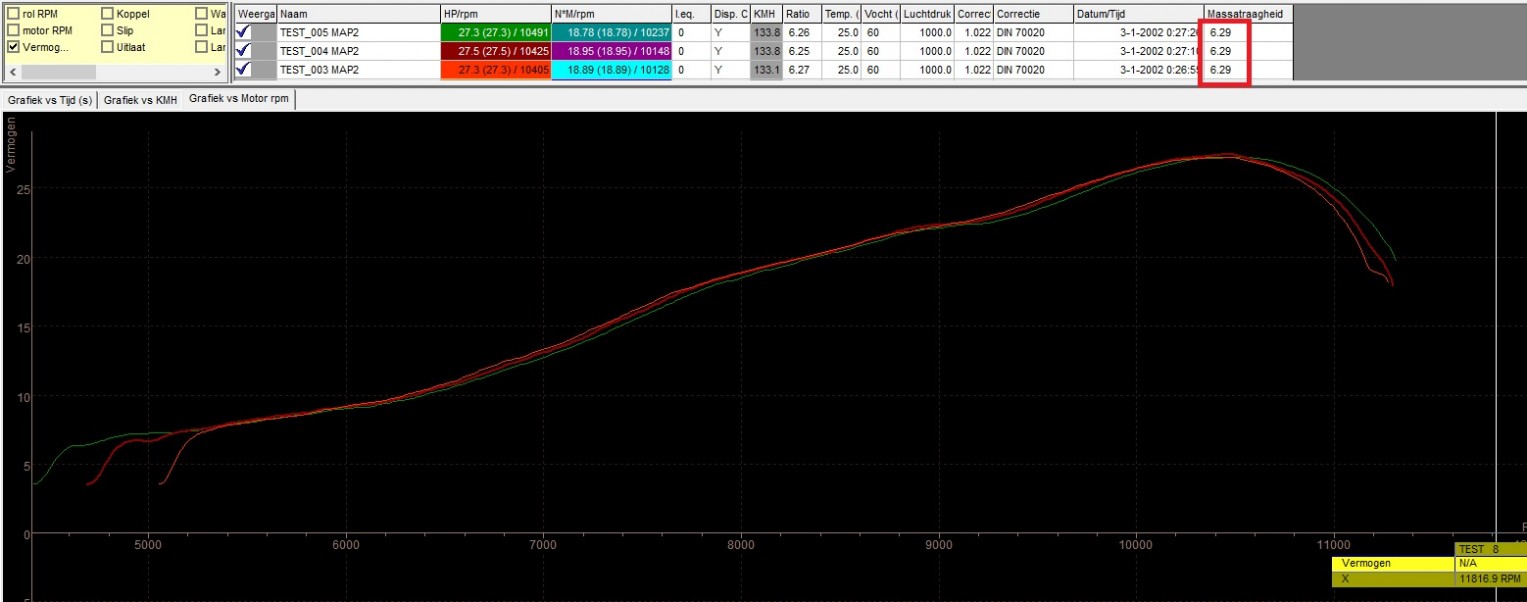This correction is used for calculating power with losses
Losses every dyno has, and its up to the dyno operator if he/she will use it for the HP calculations.
Losses contains the following
- Gear friction (gears in the gearbox)
- Clutch (friction in the clutch when doing this measurement)
- Chain friction (Cain (O-ring) and sprocket wheels)
- Tire friction (tire pressure, deformation tire, friction tire and dyno role etc etc)
Here is explained how to do a "run with losses"
That is in (short terms) a dyno run without pressing the stop button so after the power measurement it keeps measuring the energy (power) needed to stop the flywheel.
Ones measured the program ad's this to the curve so you have measured a run with losses
Ones measured the program ad's this to the curve so you have measured a run with losses
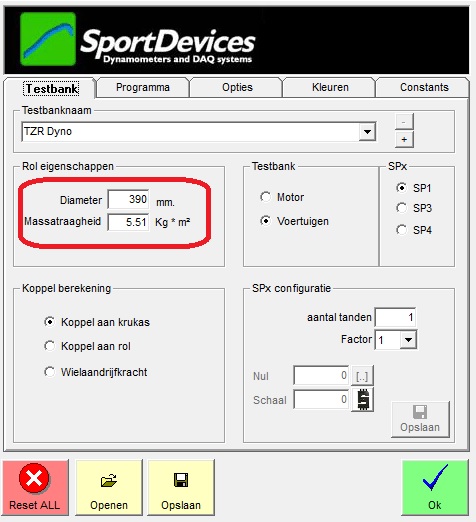
Here I have done the run with my street going tzr125
Measuring a 22,5HP
You see clearly the min part on the bottom The slowly decelerating drum
Measuring a 22,5HP
You see clearly the min part on the bottom The slowly decelerating drum
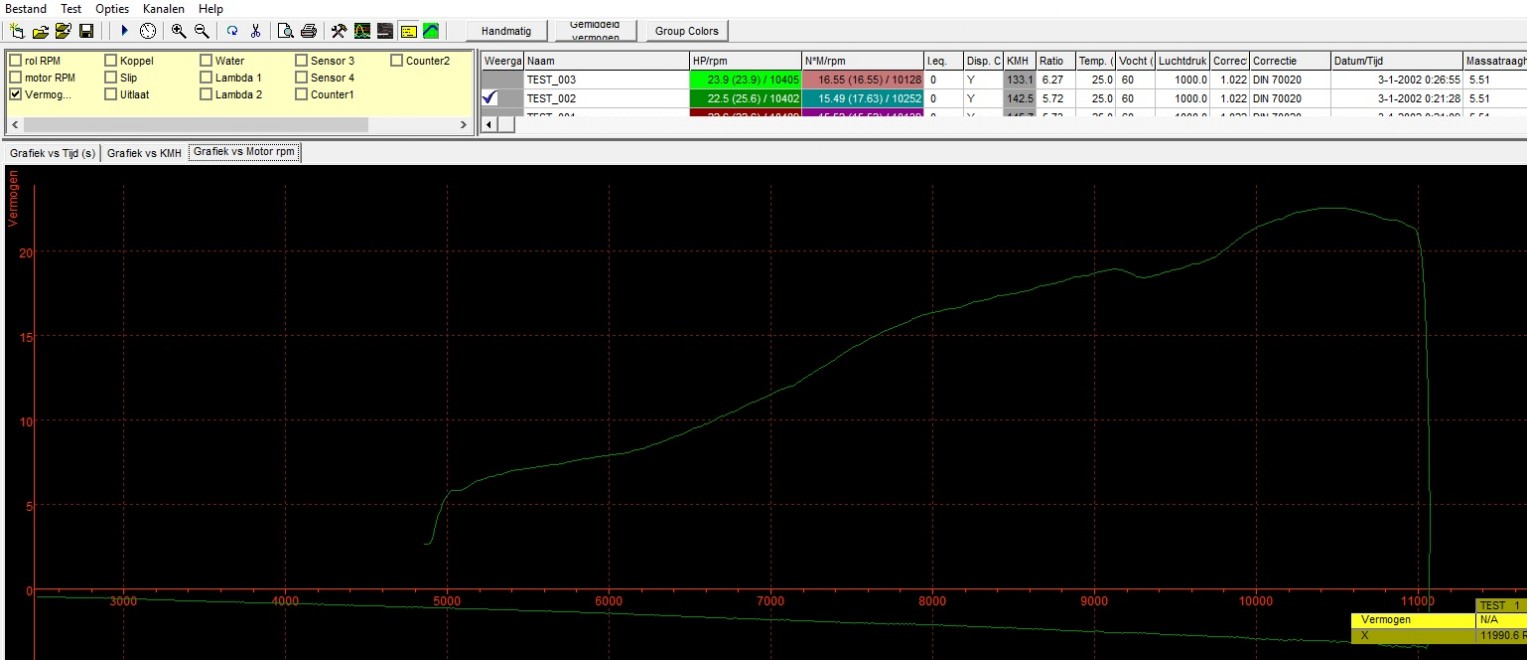
Now you select in the program.
"calculate with losses"
"calculate with losses"
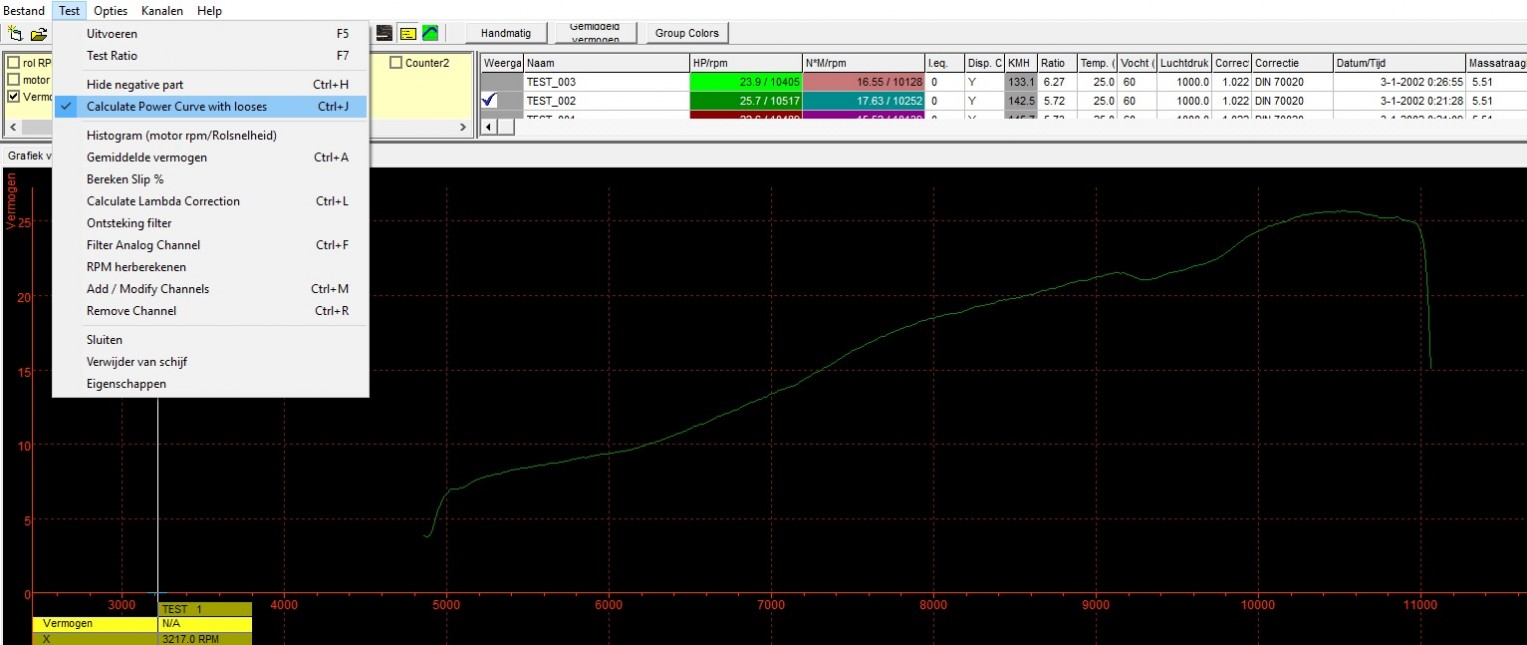
If you have done that the program ad's the losses to your measured dyno run.
Now you have 25,7HP
Now you have 25,7HP
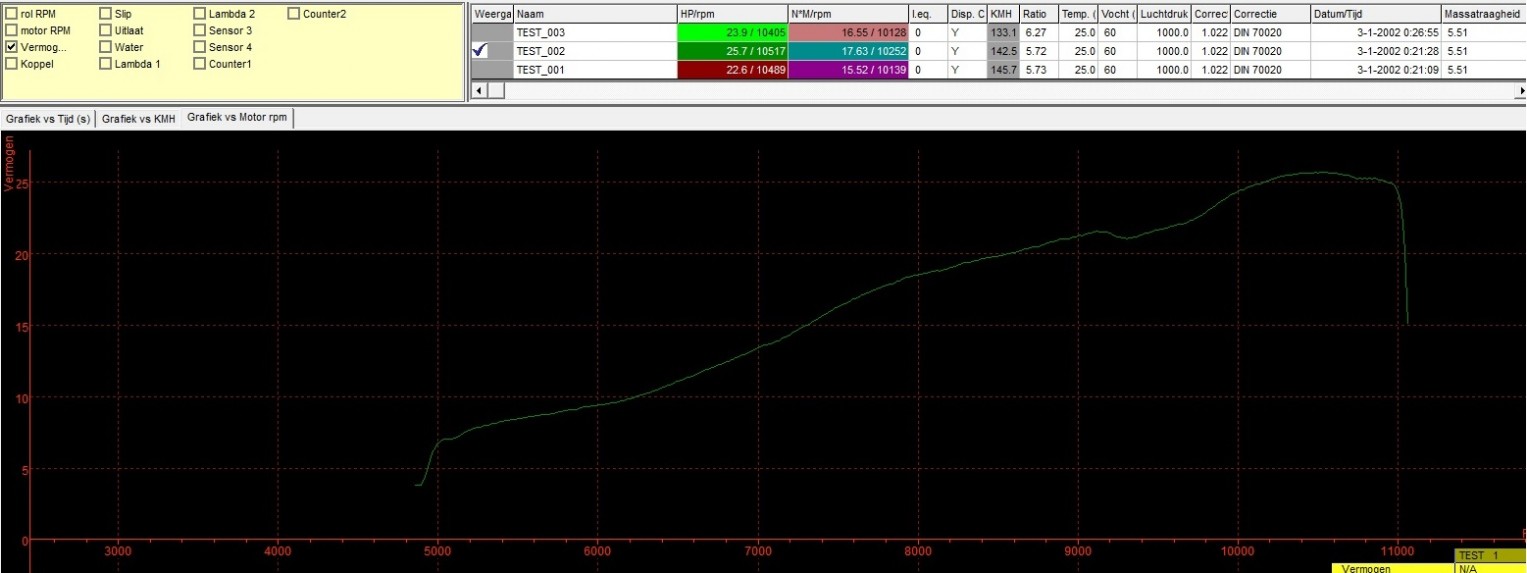
Theoretical you need to measure this with every bike because there all different. (tire pressure, width, profile, cain, gears etc.)
To prevent you need to do all the runs with the "power with losses" calculation you add a certain percentage to the mass off the drum
In my case I need to go from 5,51kg/m2 to 6,29kg/m2 to get 25,7HP
Here you see the "power with losses curve" without correction with the new set 6,29kg/m2 mass flywheel.
I have exactly the 25,7HP back.
To prevent you need to do all the runs with the "power with losses" calculation you add a certain percentage to the mass off the drum
In my case I need to go from 5,51kg/m2 to 6,29kg/m2 to get 25,7HP
Here you see the "power with losses curve" without correction with the new set 6,29kg/m2 mass flywheel.
I have exactly the 25,7HP back.
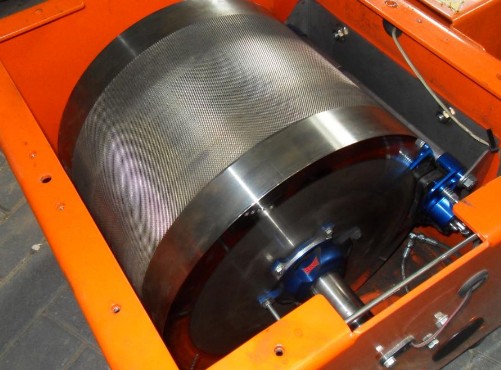
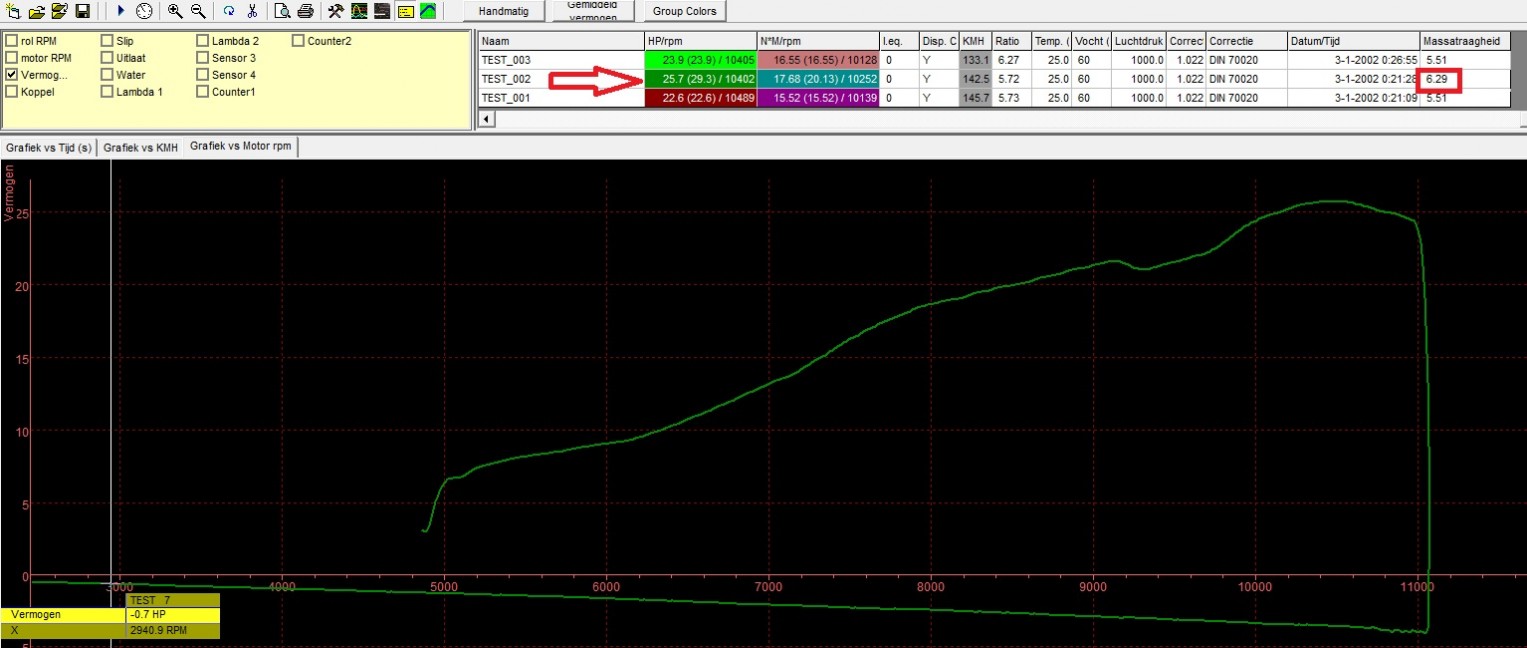
Because its not handy to change this manually with every run you make.
You set the 6.29kg/m2 in your software and all other runs you make will be calculated the same
You set the 6.29kg/m2 in your software and all other runs you make will be calculated the same
Here you have a couple off runs with this setup
